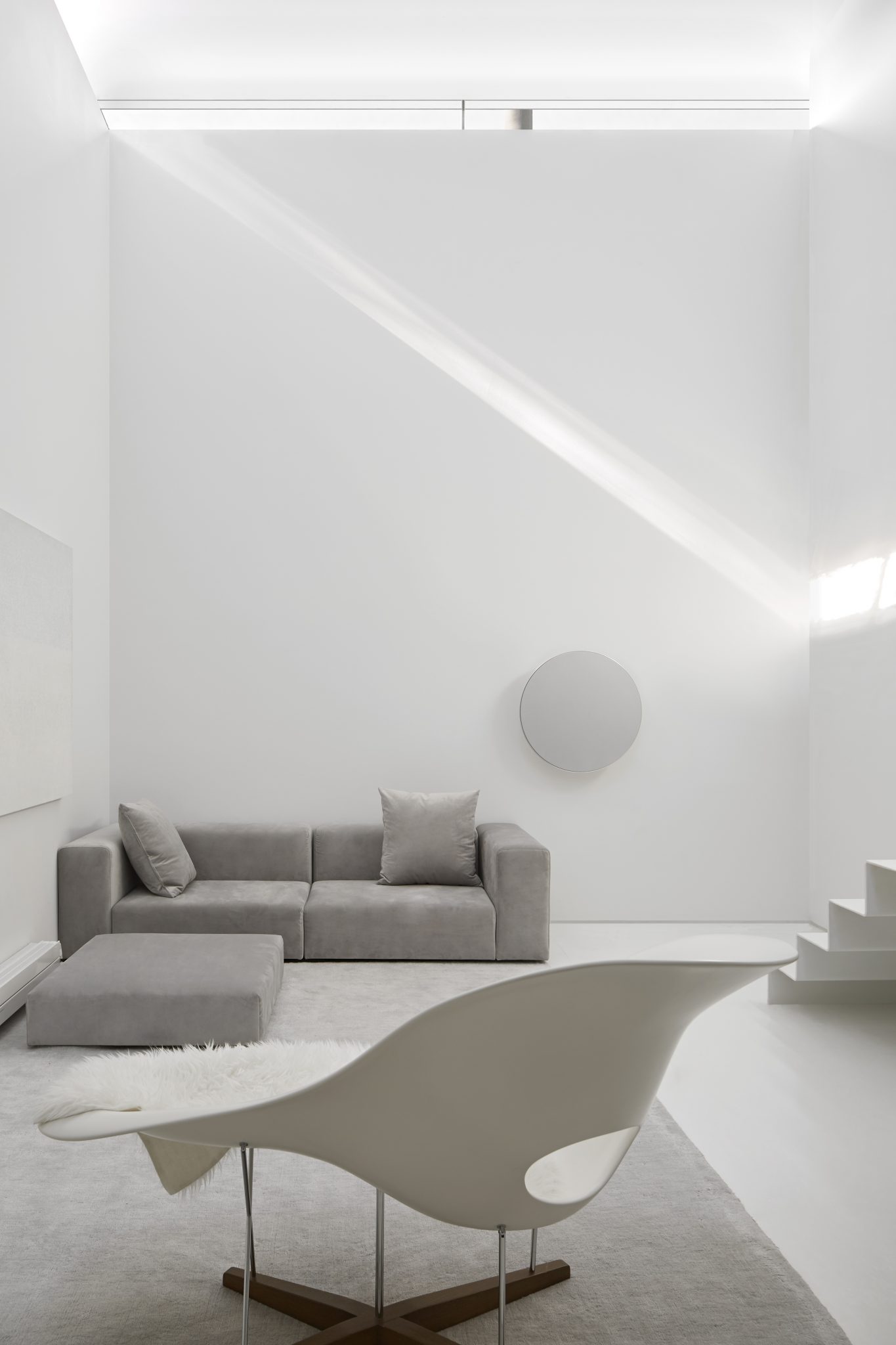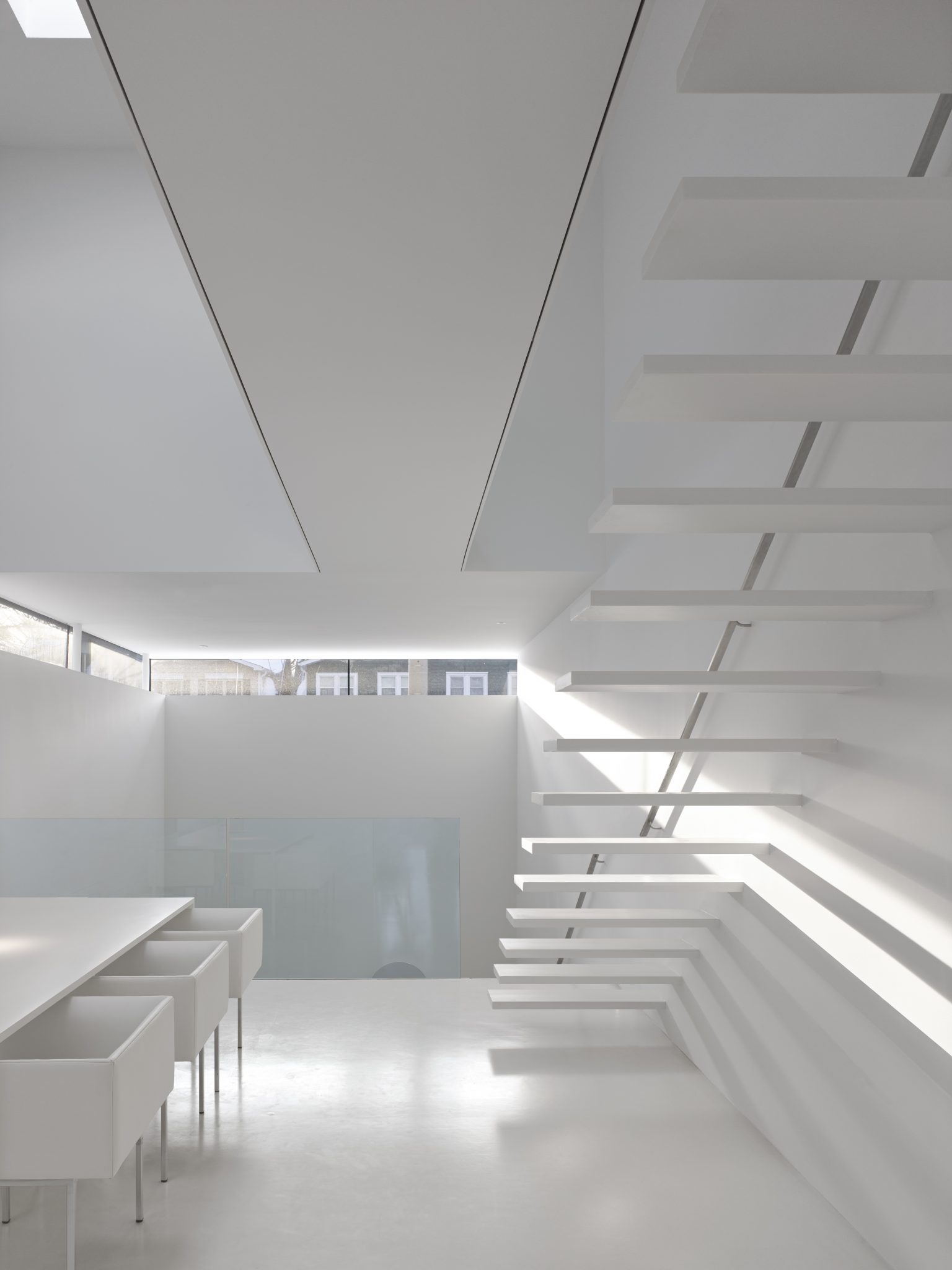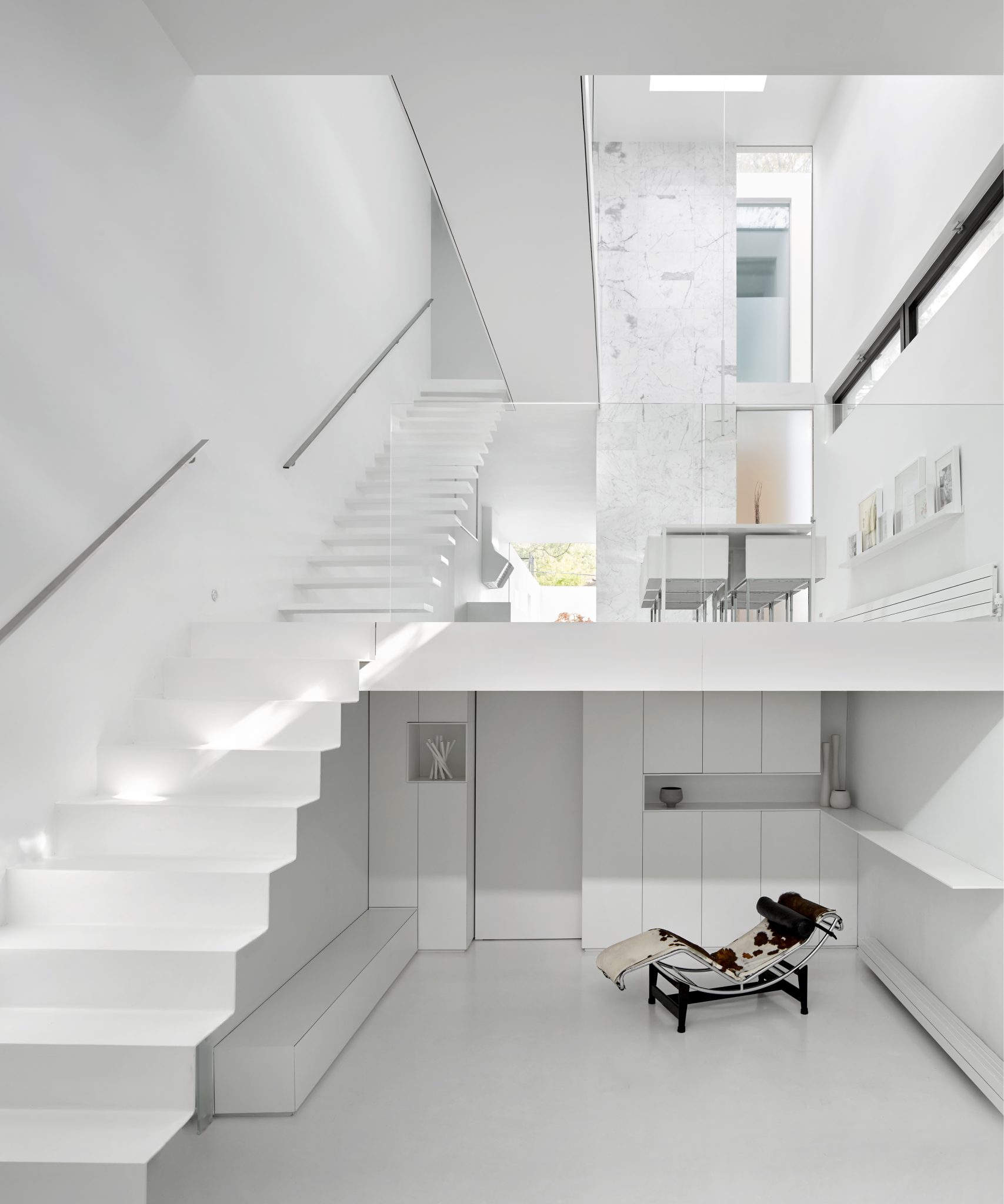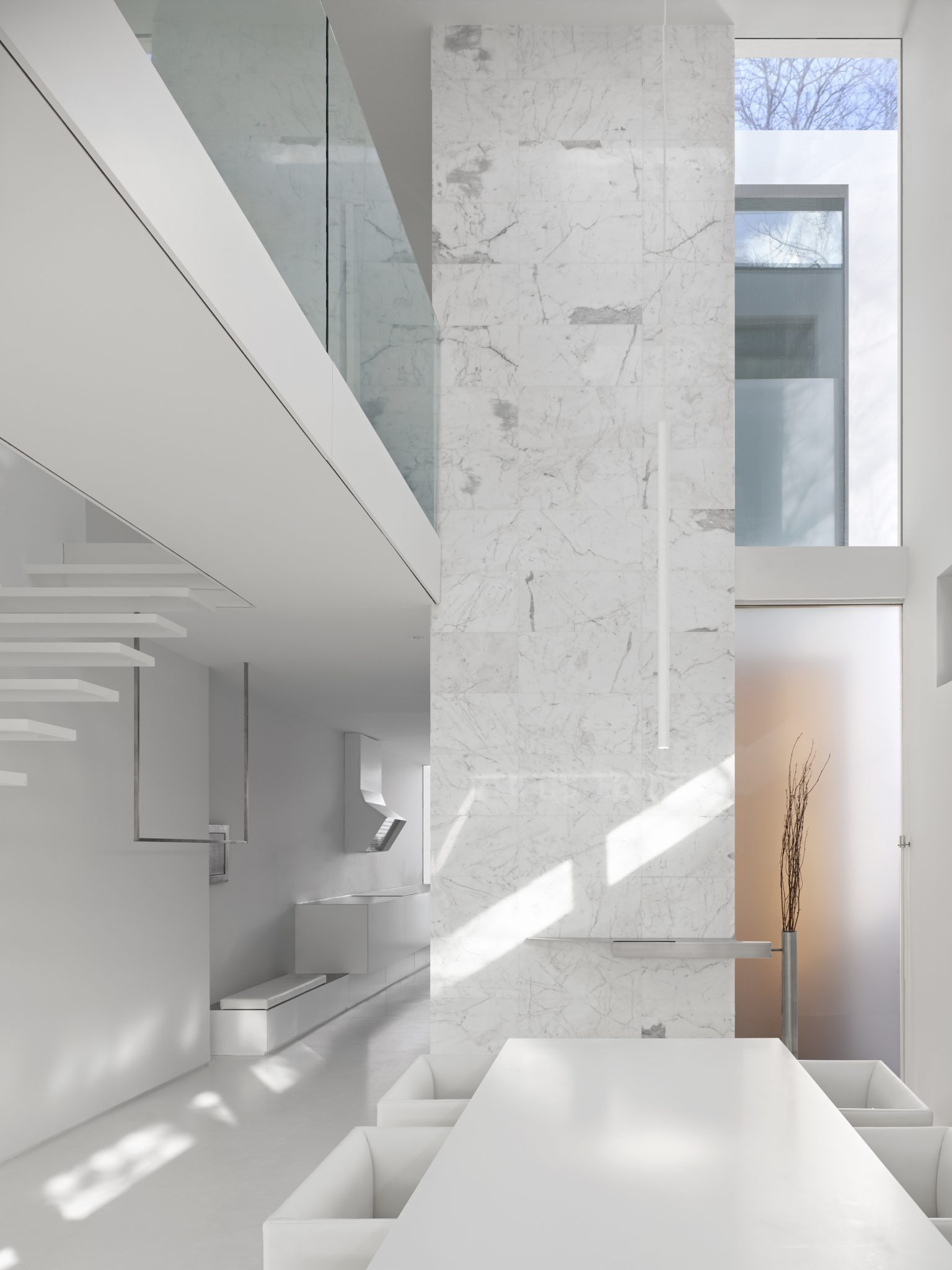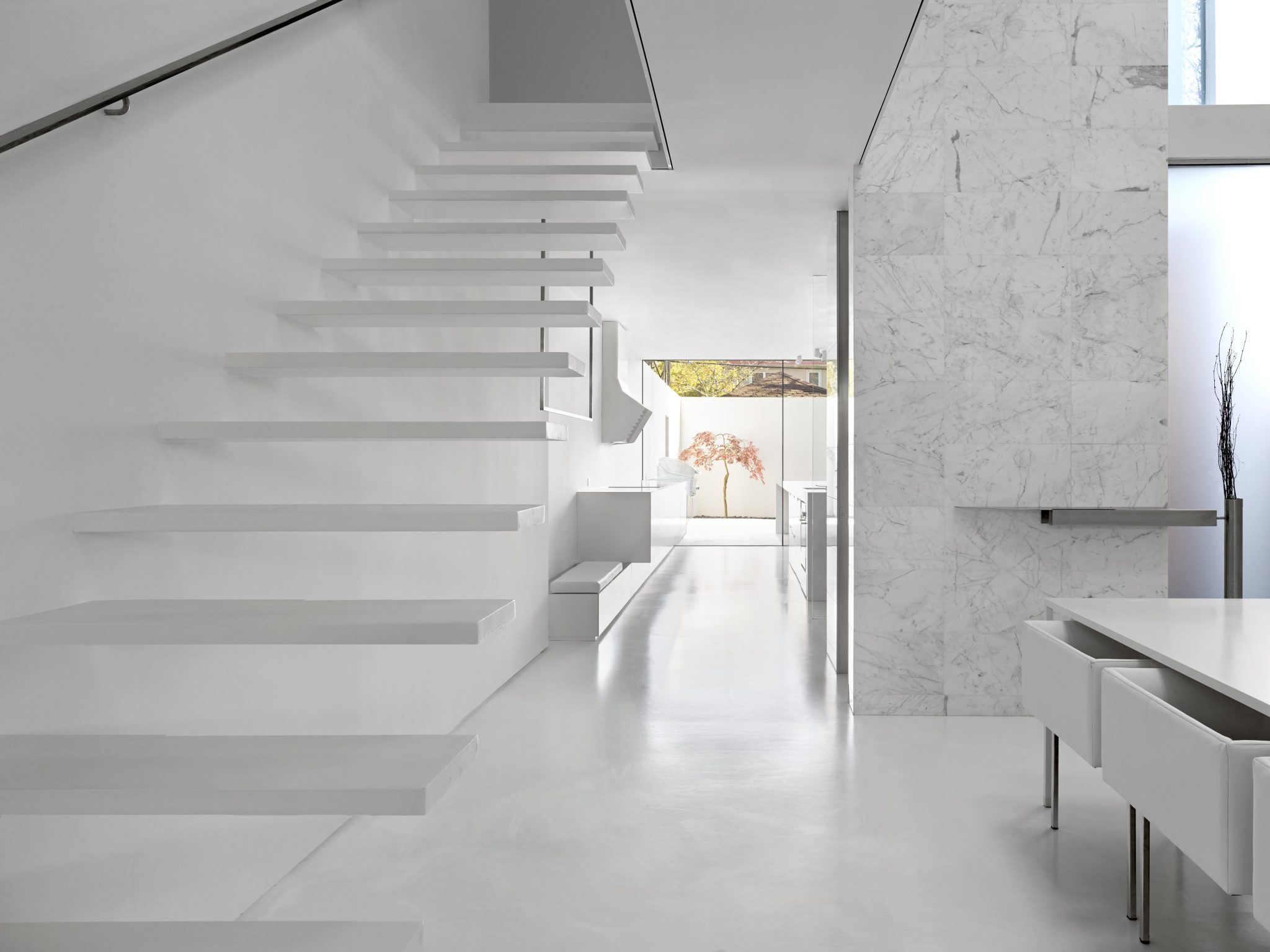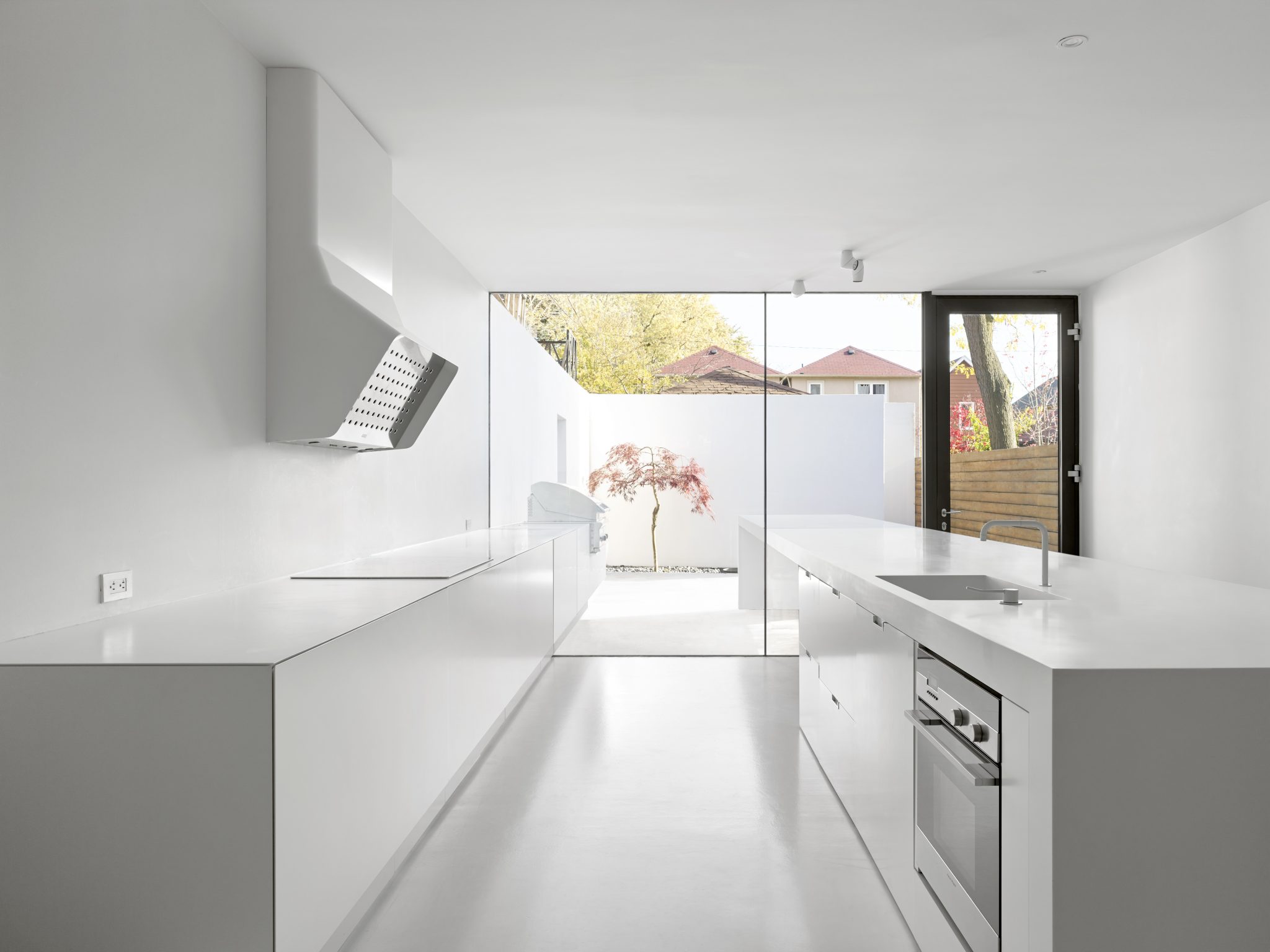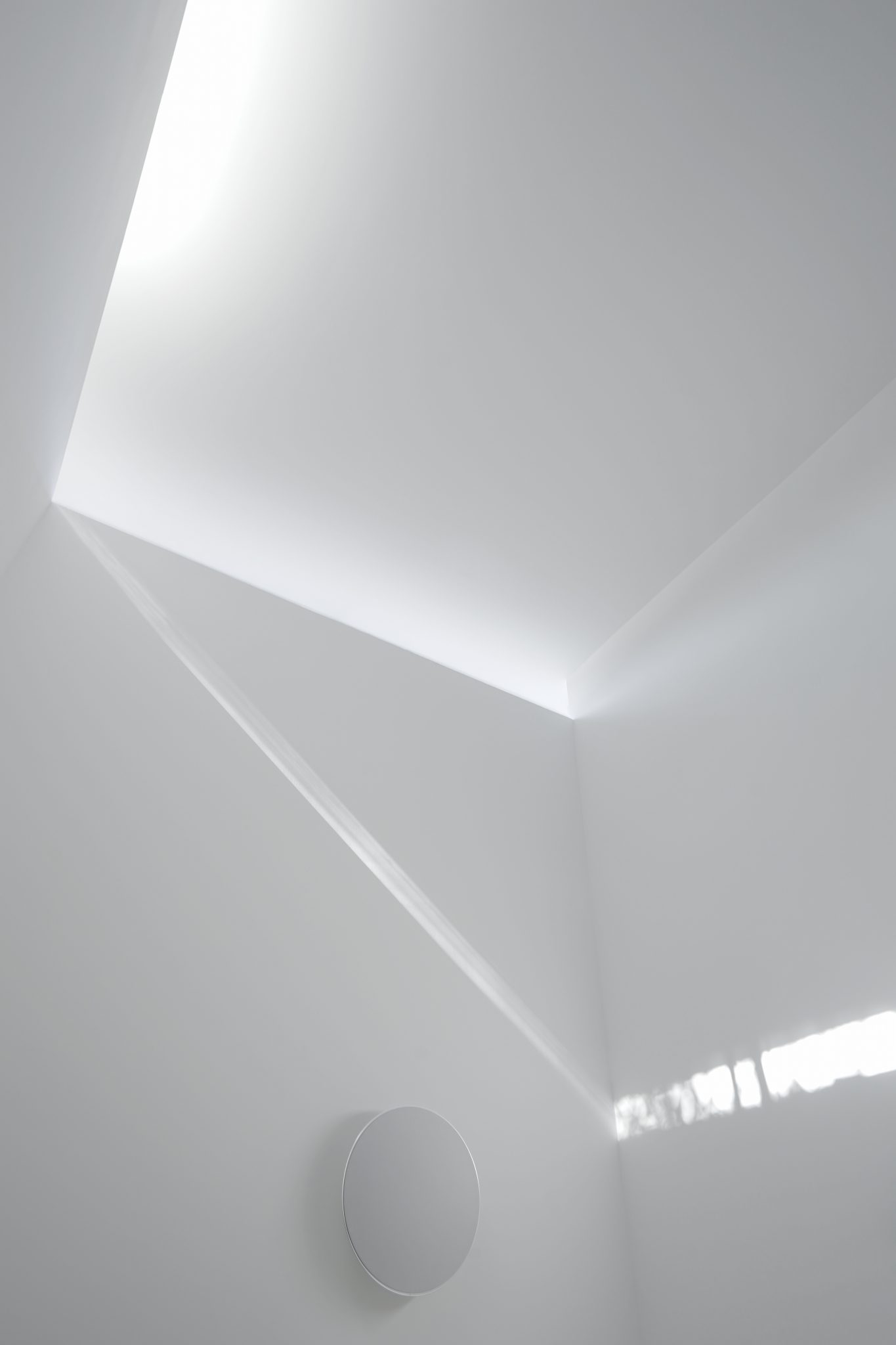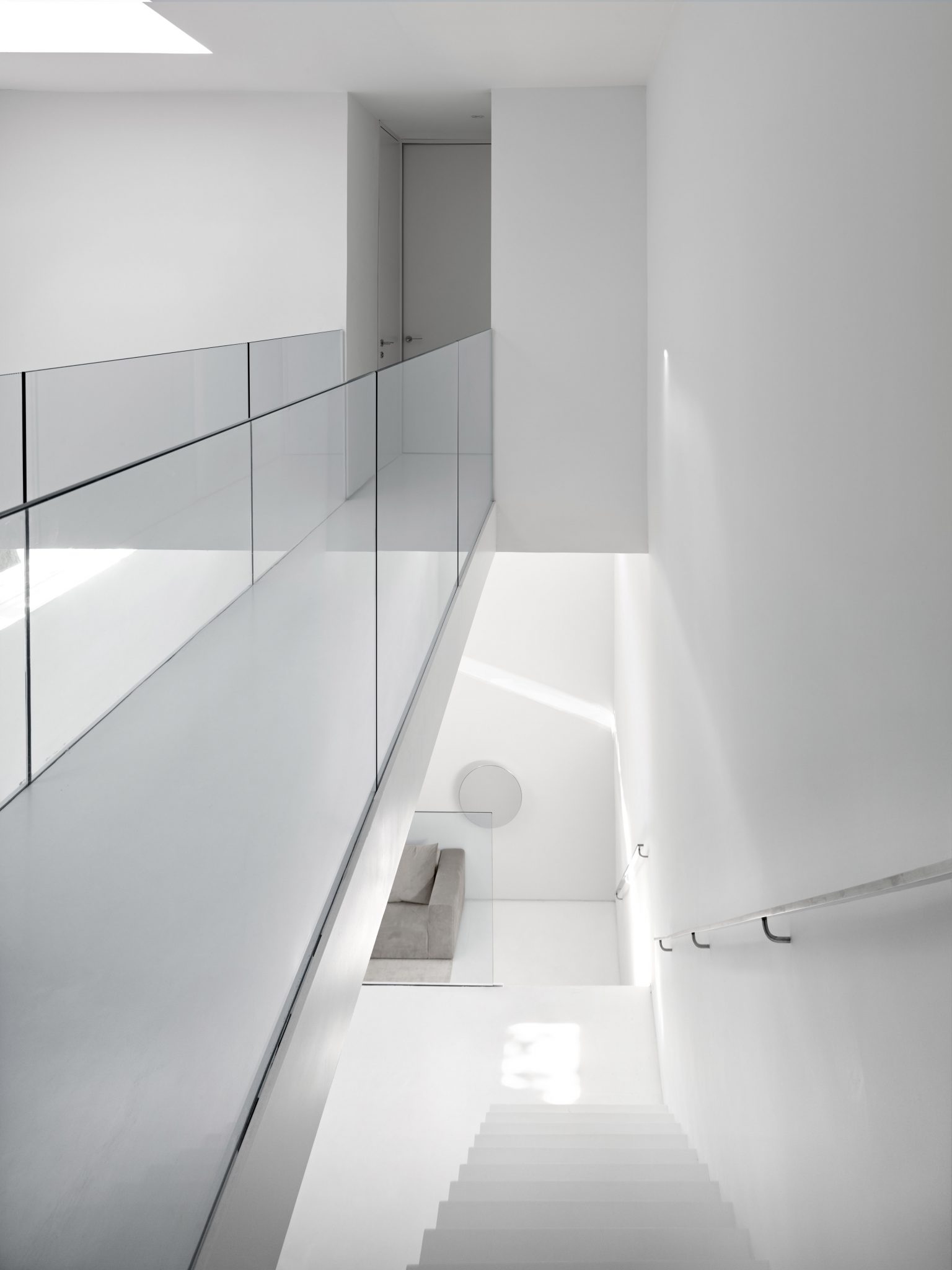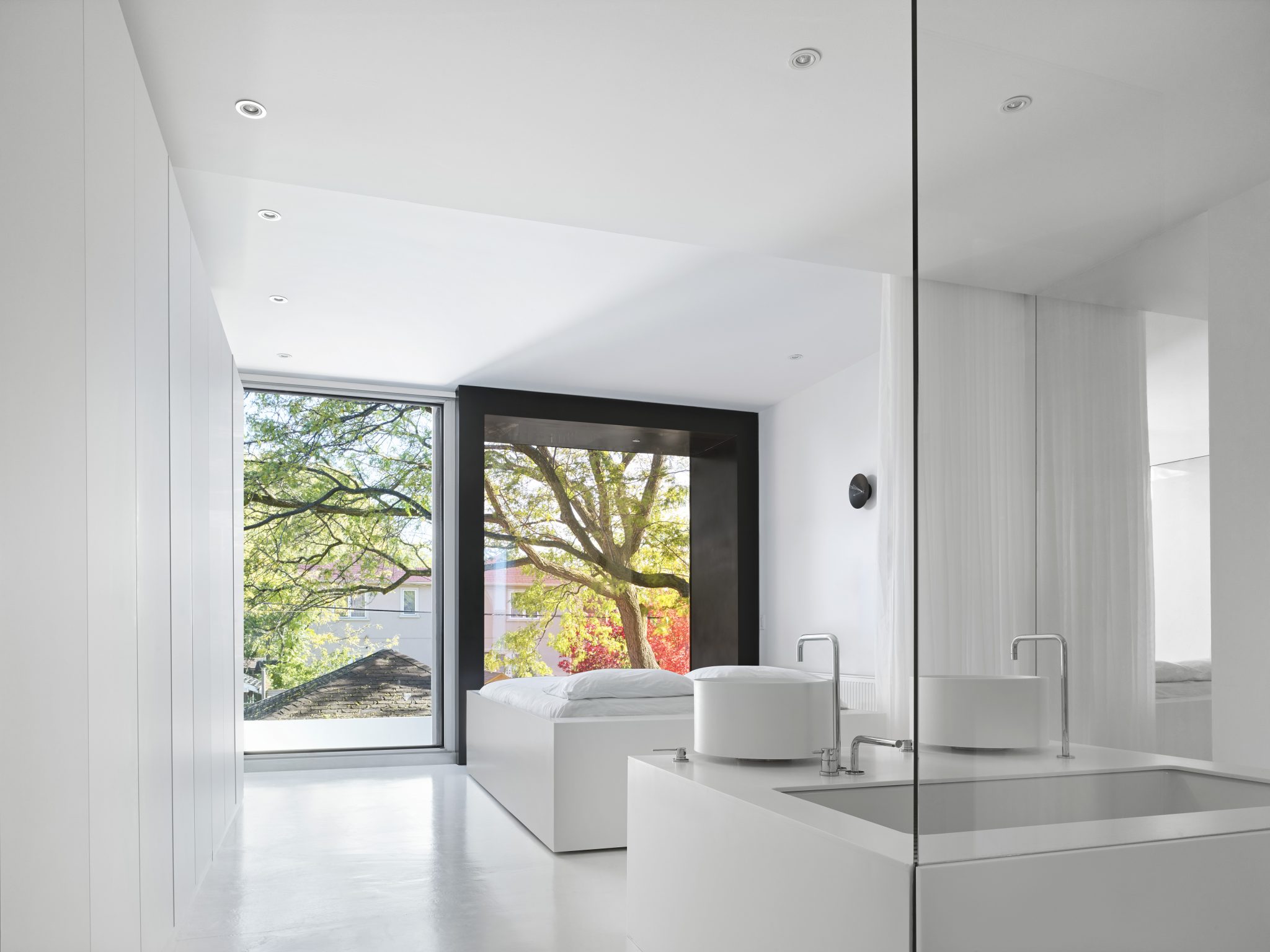ShadowBox is a minimalist property located in Toronto, Canada, designed by Johnson Chou. This project is an exploration of the essence of architecture: to enable the witnessing of the passage of time by capturing the elusive play of light and shadow, and to engender a heightened sense of movement through varying spatial scales and experiences.
This includes the expansion and compression of single, double and triple height spaces, and through one’s engagement of interior elements such as bridges and stairs. The house is configured to capture the ever-changing light and shadow effects in various areas of the residence. The shadows cast in the interior reveal the juxtaposition between the permanence of the architecture and the ephemeral of the natural.
The residence was envisioned as an instrument for the appreciation of the profound ephemerality of time. The interior walls act as a blank canvas capturing the shadows of the abstracted forms and its movement, for example, of trees swaying in a breeze, in effect projecting the exterior environment into the interior. Like a reverse sundial, beams of light move across the walls and floors of the house. The moment is mesmerizing, cinematic, fleeting; in an instant the shadows transform or disappear altogether.
Located in the Upper Beaches area of Toronto, the residence faces a busy, at times cacophonous arterial road and as a result the exterior openings were minimized to a single horizontal strip window. Entrance into the residence is at the midpoint of the building accessed through a side lane. The entrance foyer is located between the Dining and Kitchen/Breakfast areas. The east-west orientation of the building allows for morning light at breakfast and evening light at dinner. From the one-storey kitchen, the dining room is double-height and the living room is triple-height, invoking a sense of expansion or compression as one flows through the home.
The unconventional location of the living room in the “basement” is an opportunity for exciting spatial and experiential dynamics and, more interestingly, imparts an impression that the basement is no longer below grade, allowing the continuity of light and space to extend into the lower levels of the residence.
